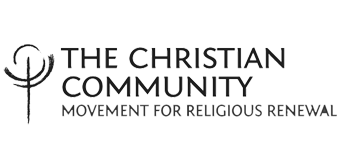Baptism in The Christian Community
Translated by Eva Heirman. First published in 1982 in Dutch under the title Noem mij bij mijn diepste noam. Doop en geboorte in de Christen gemeenschap by Uitgeverij Christofoor, Zeist. in 1982. First published in English by Floris Books in 1985. © Andreas Stichting, Den Haag 1982. This translation © Floris Books. Edinburgh, 1985.
NOTE: This is abridged from the original.
Contents
1. Why Baptism? Baptizing small children. Preparations
2. Godparents and their task. Looking for godparents
4. The form of the service and the substances used
5. The Christian Community. Church and membership
6. The influence of Baptism in everyday life
1. Why Baptism? Baptizing small children. Preparations
Baptism has always held an important place in Christian religious life. Many people, even those who rarely go to church or have lost their faith, still wish to have their children baptized. But tradition does not necessarily justify the continued existence of this sacrament in a modern conception of Christianity. Insights into the process of incarnation, birth and baptism, or observations and experiences concerning the effect and meaning of the sacraments in a Christian community, can lead to a conscious decision to have a child baptized.
Here we arrive at an important question: May we make decisions for a child that is not yet capable of his own decision-making? Obviously, he cannot understand what is entailed. Should we not go back to adult baptism? To find the answers we have to look more closely at the source and development of Christian baptism.
The Gospel describes how John the Baptist baptized in the River Jordan those people who came to him of their own free will. The event was so moving that those involved confessed their sins and experienced a complete inner change. This was possible because it was not a shallow symbolic act but an act of initiation whereby man is brought into connection with his divine, heavenly origin. John brought people to the brink of death through drowning, so that the spirit in man freed itself from the physical body and the inner eye opened to the spiritual world. That is why the Gospel speaks of a ‘turning’ (Greek metanoja) rather than ‘conversion’ as it is so often translated. It was a dramatic experience, and that must be one of the reasons it was a sacrament for adults.
The object of the baptism as John the Baptist performed it, was twofold: the cleansing (katharismos) and enlightening (Photismos) of the recipient. These two elements are very noticeable in the way the Christian baptism was originally carried out. Through baptism the soul was purified. As Paul expressed it: ‘but you were washed’ (lCor.6:1l). The vision of a higher world was experienced as an ‘enlightening’. In Roman Catholic circles it is still the custom to give a baptized baby a white cloth and a candle as christening gifts; in this way both elements are expressed.
Only adults were baptized during the first few centuries of the Christian world. We can assume that the danger involved in infant baptism by submersion became too great and that therefore, by about 350 AD, an infant baptismal ritual was introduced. With this, naturally, the whole character of baptism changed, but this was not carried through to completion in the Churches where it is still essentially an adult undertaking carried out on infants. Infant baptism retained both the confession of sins and the joining of the church. This cannot be demanded of a child, let alone a baby. Still, questions were put to the child and answered by the godparents on his behalf. Only when Baptism acts as a spiritually sacramental addition or completion of birth, can we speak of a true ‘child baptism’ as in The Christian Community. Subsequently, the main reason for an adult form of baptism falls away as this is not essential to commit oneself to a community. Who then would wish to deny a child this gift when he can freely receive it!
Apart from these points we need not place too great an emphasis on the question of making decisions for a young child. We shall have to make countless decisions regarding diet, clothing, and education throughout the child’s life. And we should realize that by not baptizing the child we have also come to a decision. Maybe the unborn or newborn child can influence our decision. It is not unusual for parents to have a definite feeling that their children helped them to decide. It is important to ask oneself ‘Why do I want to have this child baptized?’ even if other children in the family have already been baptized.
The search for godparents should begin before the birth so that they too can prepare themselves for the birth, the baptism, and their specific tasks as godparents. Often, only one consultation between parents, godparents and priest is possible owing to inadequate or late preparation and this is not really enough. The quality of anticipation is greatly enhanced when we increase our awareness of the meaning of baptism and the shared responsibilities it entails. Some people may feel this to be premature, but the experience of others indicates that preparation for baptism before the actual birth is very valuable. For the child it is best to be baptized as soon as convenient, preferably within the first six weeks of life. (In The Christian Community it is unusual to receive this sacrament beyond the fourteenth year.) Ideally, the godparents should also experience the sacramental life of the Community before the Baptism, so that they gain some perception of it and it is in the best interest of the child if they also meet those with whom they will be sharing their responsibility, namely the congregation.

What are the words the Christian Community priest uses to Baptize the baby?
Thank you 🙏🏼
How does an adult obey Christ command to be baptised if he was not baptised as a child?